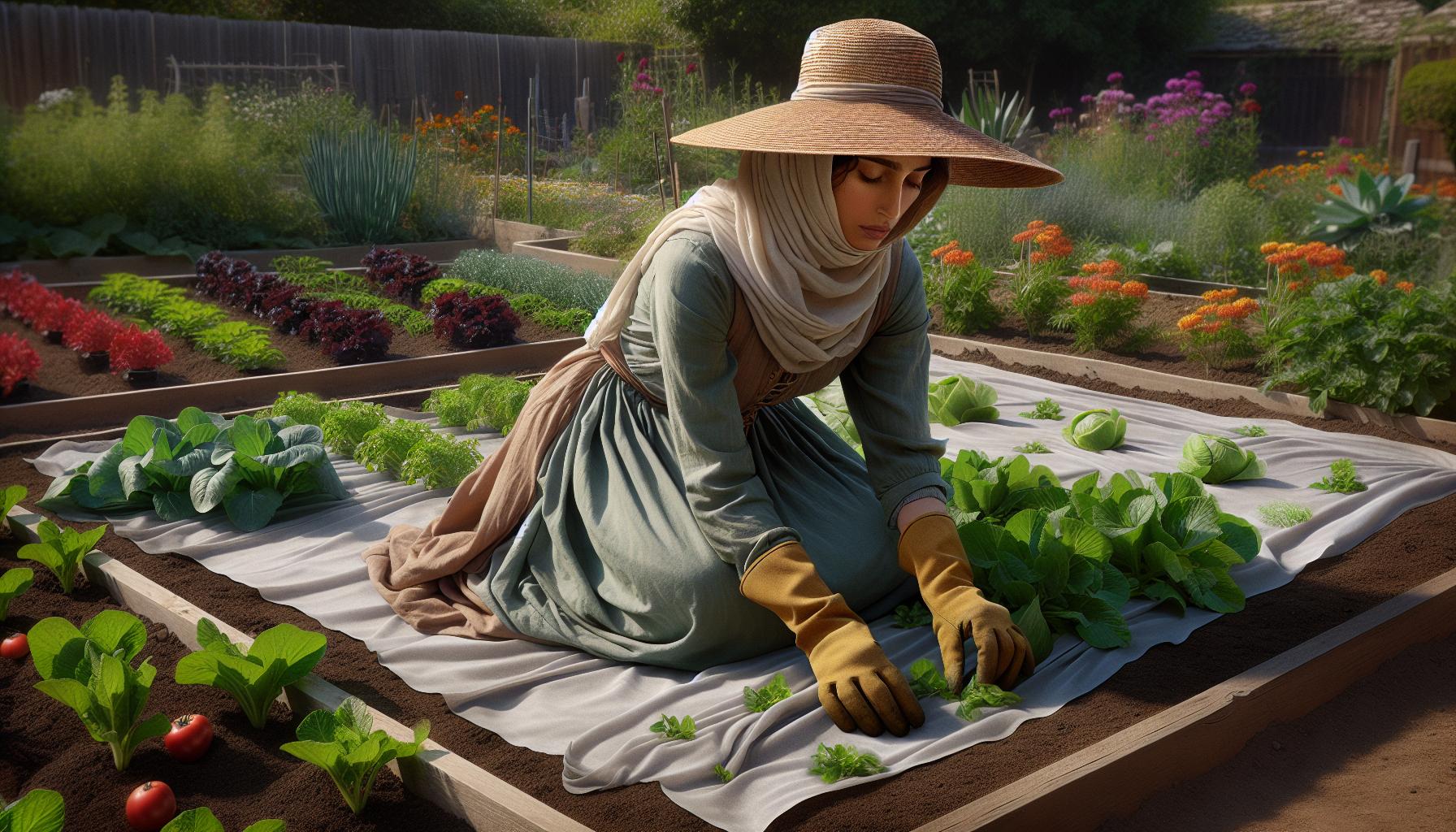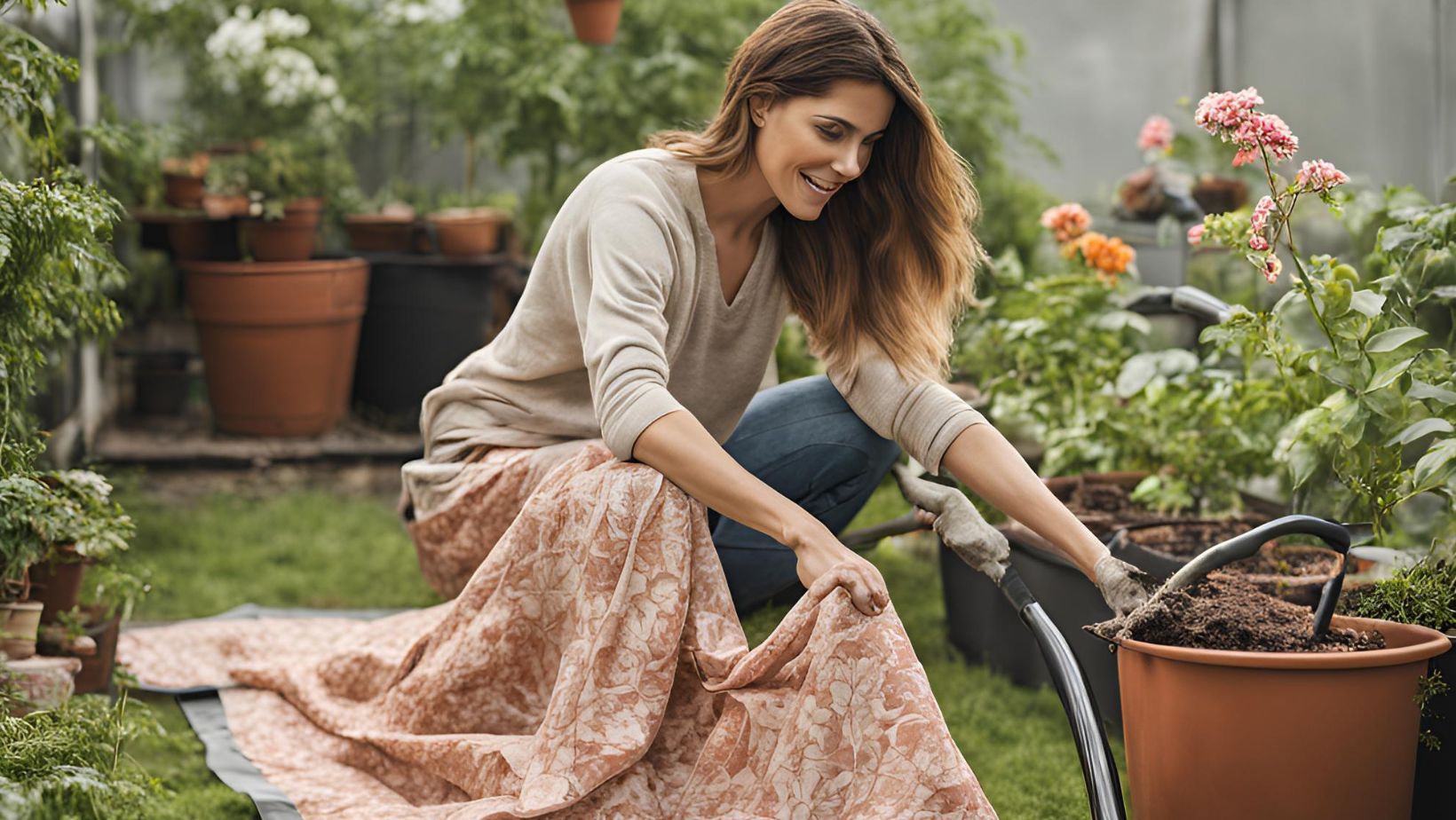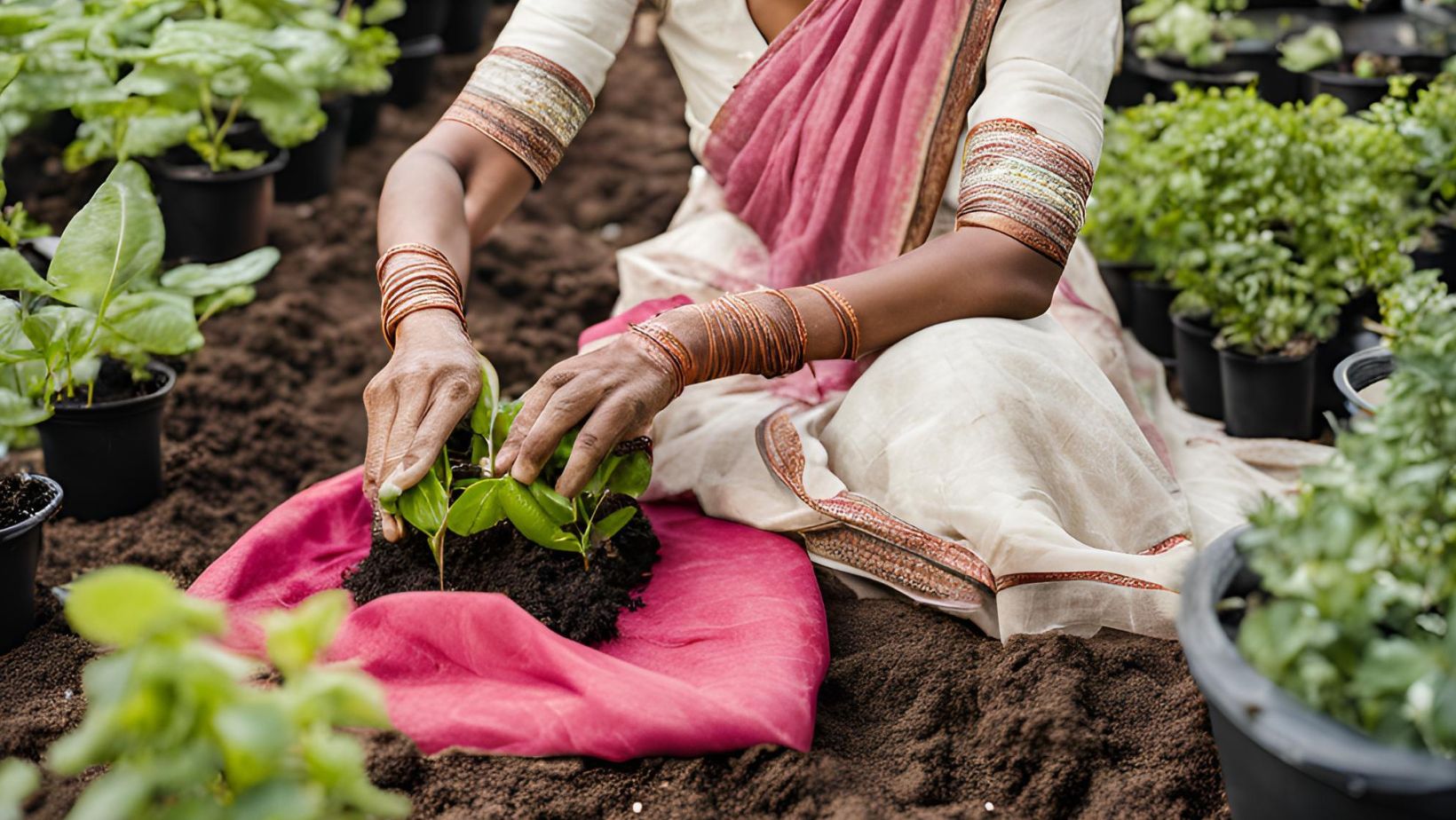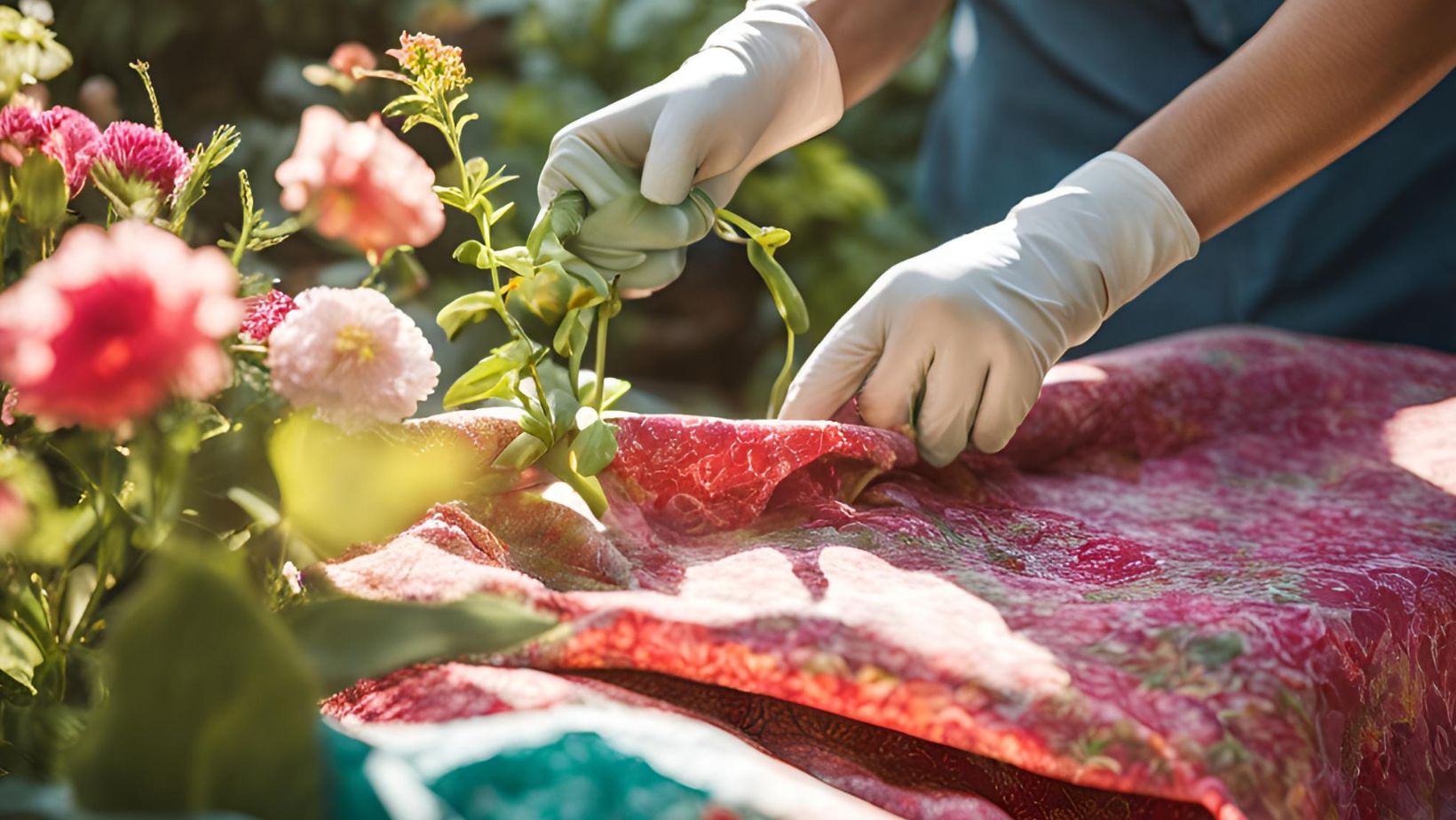
As a passionate gardener, I’ve discovered that gardening fabric is one of the most versatile tools in my arsenal. This durable material has transformed the way I maintain my garden by preventing weed growth and helping retain soil moisture. Whether you’re a seasoned gardener or just starting your green journey you’ll find this landscape fabric incredibly useful.
I remember when I first used gardening fabric in my vegetable patch. The results were remarkable – significantly fewer weeds less watering and healthier plants. While many gardeners know it as weed barrier fabric or landscape fabric it’s much more than just a weed deterrent. It’s a multi-purpose solution that can improve soil temperature control protect plant roots and make garden maintenance so much easier.
Key Takeaways
- Gardening fabric is a versatile landscaping material that blocks weeds, retains soil moisture, and regulates temperature, making it essential for efficient garden maintenance.
- Three main types of garden fabric are available: woven landscape fabric (durable, long-lasting), spunbond fabric (temporary protection), and heavy-duty ground cover (permanent landscaping).
- Proper installation requires thorough ground preparation, secure anchoring with landscape pins, and correct overlap at seams to ensure maximum effectiveness.
- Quality garden fabric should have UV resistance ratings of 5+ years, tear resistance of 50+ pounds per inch, and water permeability of 12-15 gallons per minute per square foot.
- Regular maintenance, including debris removal and proper storage, can significantly extend the fabric’s lifespan, with professional-grade materials lasting 5-8 years.
- Multi-purpose applications include weed control, frost protection, temperature regulation, and pest management in various gardening scenarios.
Gardening Fabric
Gardening fabric is a specialized textile material designed to protect plants while managing soil conditions. I use this permeable material in my garden to create optimal growing conditions by controlling weed growth moisture levels.
Different Types of Garden Fabric Available
- Woven Landscape Fabric
- Made from interlaced polypropylene strands
- Offers superior durability for long-term installations
- Blocks 99% of weeds while allowing water penetration
- Spunbond Fabric
- Constructed from bonded polyester fibers
- Ideal for temporary garden protection
- Provides excellent air moisture permeability
- Heavy-Duty Ground Cover
- Features UV-stabilized materials
- Lasts 15-20 years with proper installation
- Perfect for permanent landscaping projects
- Weed Management
- Blocks sunlight from reaching weed seeds
- Reduces manual weeding by 90%
- Creates a physical barrier against invasive plants
- Moisture Control
- Reduces water evaporation by 30%
- Maintains consistent soil humidity
- Minimizes irrigation frequency
- Temperature Regulation
- Keeps soil 5-10 degrees warmer in cold weather
- Prevents root shock during temperature fluctuations
- Extends growing seasons in both spring fall
- Soil Protection
- Prevents erosion during heavy rainfall
- Maintains soil structure integrity
- Reduces soil compaction from foot traffic
| Fabric Type | Lifespan (Years) | Light Blocking (%) | Water Permeability Rate (gal/min/sq ft) |
|---|---|---|---|
| Woven | 15-20 | 99 | 12-18 |
| Spunbond | 3-5 | 85 | 25-30 |
| Heavy-Duty | 20+ | 99.9 | 8-12 |
How to Choose the Right Gardening Fabric
Selecting appropriate gardening fabric starts with evaluating specific garden needs and growing conditions. I’ve identified key factors to consider when choosing landscape fabric through extensive testing in my garden beds.
Material Quality and Durability
Premium gardening fabric features UV-stabilized polypropylene that resists degradation from sunlight exposure. I look for these specific durability indicators:
- Thickness ratings between 2-4 ounces per square yard for standard garden use
- Double-layered or needle-punched construction for enhanced strength
- UV resistance ratings of 5+ years
- Tear resistance of at least 50 pounds per inch
- Water permeability rate of 12-15 gallons per minute per square foot
- Measure bed width plus 12 inches for secure edge anchoring
- Add 6 inches to length measurements for overlap at seams
- Consider standard roll widths: 3 feet 4 feet 6 feet
- Calculate total square footage needed:
- Vegetable gardens: exact bed dimensions
- Landscape beds: add 15% for curves contours
- Purchase extra fabric for repairs future expansion
| Roll Width | Best Used For |
|---|---|
| 3 feet | Narrow paths vegetable rows |
| 4 feet | Standard garden beds |
| 6 feet | Large landscape areas |
Installing Garden Fabric Correctly
Proper installation of gardening fabric creates an effective barrier against weeds while allowing water penetration. I’ve developed a systematic approach through years of gardening experience to ensure optimal placement and longevity of landscape fabric.
Step-by-Step Installation Guide
- Clear the Ground
- Remove existing weeds root systems
- Rake away rocks debris larger than 1 inch
- Level the soil surface with a garden rake
- Measure and Cut
- Add 6 inches extra on each side for overlap
- Cut straight edges using sharp scissors
- Position fabric with the rough side facing down
- Position the Fabric
- Unroll fabric in straight lines
- Overlap seams by 4-6 inches
- Pull fabric taut to eliminate wrinkles
- Secure the Edges
- Insert landscape pins every 8-10 inches
- Double-pin corners overlaps
- Use U-shaped stakes in high-wind areas
- Create Plant Openings
- Cut X-shaped slits for plants
- Fold back fabric edges at cuts
- Space holes based on mature plant size
- Improper Ground Preparation
- Leaving existing weeds underneath
- Skipping soil leveling
- Installing over uneven surfaces
- Inadequate Securing
- Using too few landscape pins
- Placing pins too far apart
- Neglecting edge securing
- Poor Seam Management
- Insufficient overlap between pieces
- Gaps at fabric joints
- Misaligned edges
- Incorrect Cutting
- Oversized plant holes
- Jagged fabric edges
- Improper measuring
- Material Mishandling
- Walking on loose fabric
- Dragging heavy objects across surface
- Stretching fabric too tight
Maintaining and Caring for Garden Fabric
gardening fabric maintenance extends its lifespan and preserves its effectiveness in weed control and soil protection. I’ve developed specific routines for cleaning storing and replacing garden fabric based on extensive testing in my garden beds.
Cleaning and Storage Tips
I maintain my gardening fabric through these essential steps:
- Remove debris weekly using a leaf blower or soft-bristled brush
- Clean stubborn stains with mild soap water using gentle circular motions
- Rinse thoroughly with a garden hose on low pressure
- Allow complete drying before handling or storing
- Roll fabric neatly instead of folding to prevent permanent creases
- Store in a dry sealed container away from direct sunlight
- Label rolls with dimensions dates for easy identification
- Keep fabric elevated off concrete floors in storage
- Visible tears larger than 2 inches that can’t be patched
- Thinning areas where light penetrates easily
- Degraded UV resistance showing as brittleness
- Widespread root penetration through the material
- Color fading from black to gray
- Decreased water permeability
- Edge fraying extending more than 3 inches
- Fabric age reaching:
- 1-2 years for lightweight fabrics
- 3-5 years for medium-weight materials
- 5-8 years for professional-grade barriers
| Fabric Type | Expected Lifespan | Replacement Indicators |
|---|---|---|
| Lightweight | 1-2 years | Color fading thinning |
| Medium-weight | 3-5 years | Reduced permeability tears |
| Professional-grade | 5-8 years | Edge deterioration UV damage |
Best Uses for Garden Fabric in Your Landscape
gardening fabric serves multiple practical applications in landscaping scenarios based on its versatile characteristics. From my experience testing various landscaping methods, I’ve identified these essential applications that maximize the fabric’s effectiveness.
Weed Control and Prevention
gardening fabric creates an effective barrier against persistent weeds in flower beds, vegetable gardens, and pathways. I’ve found these specific applications particularly effective:
- Placing under mulch layers in perennial gardens to prevent weed seeds from germinating
- Installing around established trees and shrubs to reduce maintenance needs
- Covering vegetable garden paths to eliminate weekly weeding tasks
- Using in raised beds to create a weed-free growing environment
- Applying between row crops to maintain clear cultivation lines
- Draping over tender seedlings to prevent frost damage in early spring
- Creating wind barriers around young transplants during establishment
- Shielding fruit trees from birds and insects during peak growing seasons
- Installing as row covers to protect crops from pest infestations
- Providing shade protection for heat-sensitive plants in summer
- Wrapping container plants to prevent root damage during winter freezes
| Protection Type | Temperature Change | Light Transmission |
|---|---|---|
| Frost Protection | +4°F to 6°F | 85% |
| Heat Shield | -10°F to 15°F | 30-50% |
| Pest Barrier | No change | 75-90% |
An Invaluable Tool
Gardening fabric has revolutionized the way I approach garden maintenance and plant care. I’ve found it to be an invaluable tool that saves time while promoting healthier plant growth. Through proper selection installation and maintenance this versatile material can transform any garden space into a more manageable and productive environment.
Whether you’re a seasoned gardener or just starting I strongly recommend giving gardening fabric a try. It’s an investment that’ll pay dividends in reduced maintenance improved plant health and enhanced growing conditions. Remember to choose high-quality materials install them correctly and maintain them properly to maximize their benefits in your garden.





